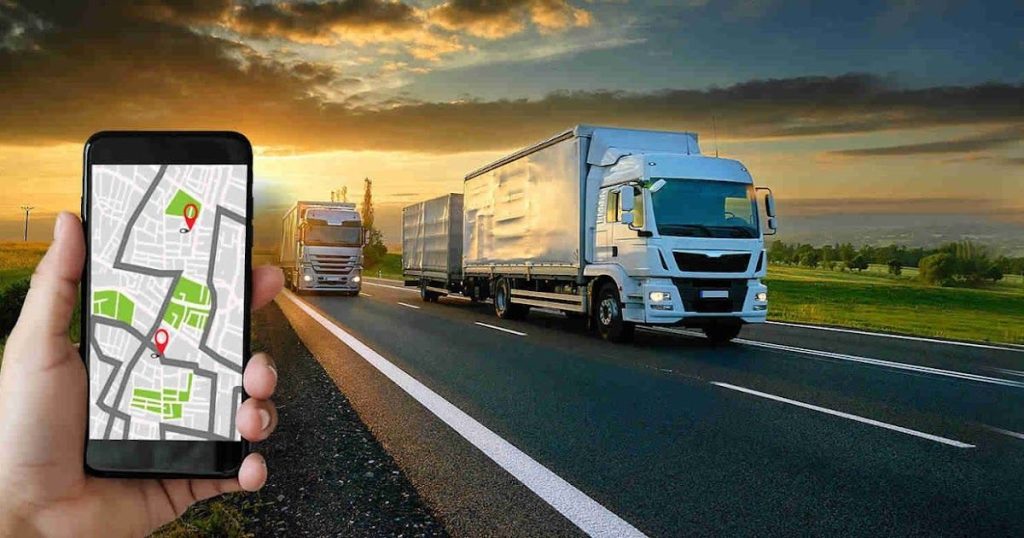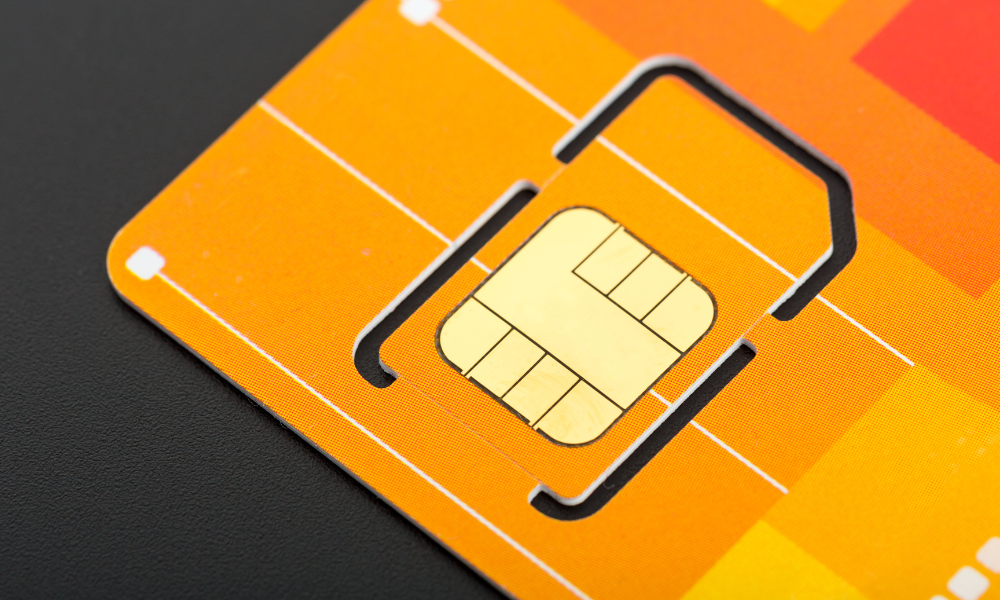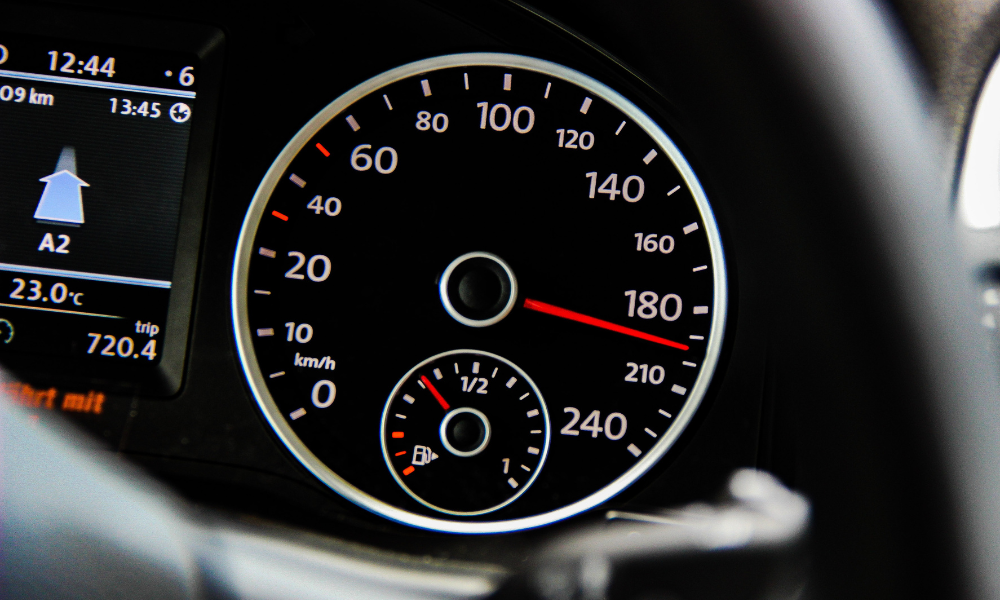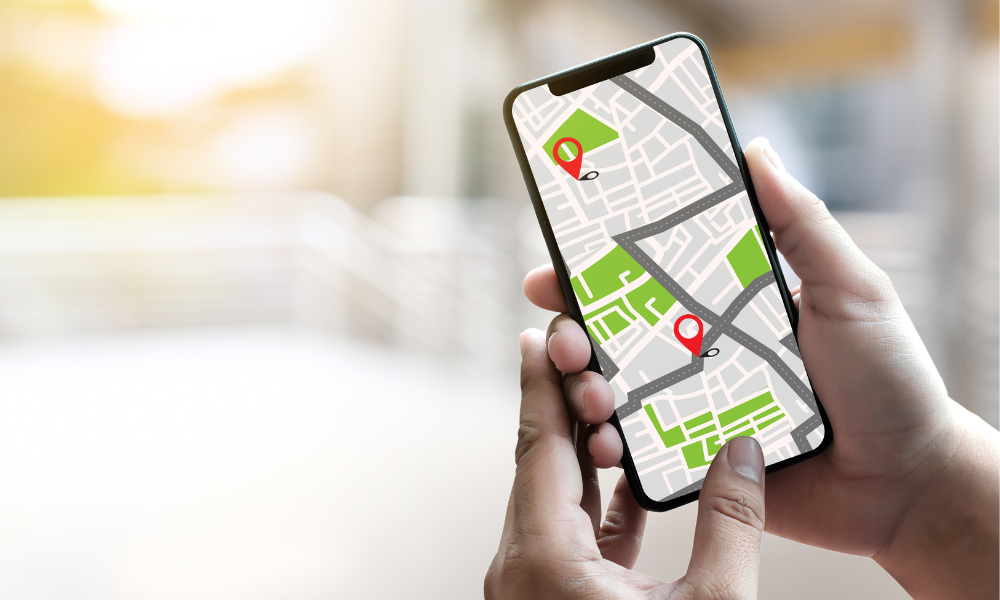The vehicle tracking system has revolutionized the way businesses manage their fleet operations. With the advancement in technology, plant vehicle tracking systems have emerged as an efficient solution for construction and agricultural companies to keep a track of their heavy machinery and equipment.
These systems offer real-time monitoring of the location, speed, and other important parameters of the vehicles, which not only enhance overall productivity but also ensure the safety of the equipment.
In this blog, we will discuss some must-have features of the in-plant vehicle tracking system must have features and the top software available in the market to help you make an informed decision.

Vehicle Tracking System How It Works
A vehicle tracking system is a technology that uses GPS (Global Positioning System) and GSM (Global System for Mobile Communications) networks to track the location, movement, and behavior of vehicles in real time. It is widely used in logistics, transportation, and fleet management to optimize vehicle performance, improve safety, and reduce operational costs.
The vehicle tracking system works by installing a GPS tracking device in the vehicle, which constantly sends data about the vehicle’s location, speed, direction, and other parameters to a central server via the GSM network. The data is then processed and analyzed using software that can provide various types of reports, alerts, and notifications to the users.

Here is a step-by-step explanation of how a typical vehicle tracking system works:
- The GPS tracking device is installed in the vehicle, usually under the dashboard or on the windshield. The device is powered by the vehicle’s battery and has a SIM card that enables it to communicate with the GSM network.
- The device uses GPS satellites to determine the vehicle’s location, speed, and direction and then sends this data to the central server via the GSM network.
- The central server receives the data from multiple GPS devices and stores it in a database. The server also runs various algorithms to analyze the data and generate reports and alerts based on user-defined rules.
- The users can access the tracking system using a web-based interface or a mobile app, where they can view the real-time location and status of their vehicles, as well as historical data and reports.
- The users can set up various types of alerts and notifications, such as geofencing (when a vehicle enters or exits a predefined area), speeding, idle time, fuel consumption, and maintenance reminders.
- The users can also generate reports on various aspects of vehicle performance, such as fuel efficiency, driver behavior, route optimization, and compliance with regulations.
All in all we can say that a vehicle tracking system is a powerful tool for managing and optimizing fleet operations, providing real-time visibility and insights into vehicle performance and behavior.
It works by using GPS and GSM technologies to track the vehicles’ location and movement and then processing and analyzing the data to provide useful information and alerts to the users.
Vehicle Tracking System Features
A Vehicle Tracking System (VTS) is a technology-based solution that helps fleet owners to monitor and manage their vehicles remotely. Here are 15 key features of a VTS:
- Real-time tracking: The VTS provides real-time tracking of the vehicles, showing their exact location on a map.
- Geo-fencing: Geo-fencing allows the creation of virtual boundaries on the map, and sends an alert when the vehicle enters or leaves that area.
- Speed monitoring: Speed monitoring helps in controlling the speed of the vehicle by setting up speed limits, and alerting the driver and fleet owner when the vehicle exceeds those limits.
- Fuel monitoring: The VTS monitors fuel consumption, and can alert the fleet owner when the fuel level falls below a certain level.
- Driver behavior monitoring: The system tracks driver behavior, such as harsh braking and acceleration, and alerts the fleet owner to prevent any unsafe driving practices.
- Vehicle health monitoring: The VTS monitors vehicle health by tracking the engine performance, tire pressure, and battery levels, and alerts the fleet owner when maintenance is needed.
- Theft prevention: The VTS provides anti-theft features, such as immobilization of the engine, and alerts the owner and authorities when any unauthorized use of the vehicle is detected.
- Route optimization: The system provides the most efficient route to reach a destination, which can help in reducing fuel consumption and improve delivery times.
- Predictive maintenance: The system uses data analytics to predict the maintenance needs of the vehicle, which can help in reducing downtime and maintenance costs.
- Mobile access: The system provides mobile access, allowing the fleet owner to monitor the vehicles from anywhere at any time.
- Integration with other systems: The VTS can be integrated with other systems, such as dispatch systems and accounting software, for seamless operation.
- Customizable alerts: The system provides customizable alerts, allowing the fleet owner to receive alerts based on their specific needs.
- Electronic logbook: The system provides an electronic logbook, which helps in maintaining accurate records of the vehicle’s activities.
- Remote diagnostics: The system provides remote diagnostics, allowing the fleet owner to troubleshoot any vehicle issues remotely.
- Improved customer service: The system helps in improving customer service by providing accurate delivery times and real-time updates on the location of the vehicle.
Applications of Vehicle Tracking System
A Vehicle Tracking System is a technology that allows vehicle owners to monitor the location and activities of their vehicles in real time. It uses GPS technology to provide accurate and real-time location data that can be accessed through a web-based dashboard or mobile application.
The system is used in a variety of industries and has numerous applications. One of the most common applications of a Vehicle Tracking System is fleet management. Companies that operate a fleet of vehicles can use the system to monitor the location, speed, and route of their vehicles.
This helps them to optimize routes, reduce fuel consumption, and improve driver behavior. It also helps them to manage their workforce more effectively by providing real-time updates on the location and availability of their vehicles.
Other applications of a Vehicle Tracking System include theft recovery, where the system can alert the owner or authorities when the vehicle is moved without authorization. It is also used in logistics and transportation, where it helps to improve supply chain efficiency by providing real-time updates on the location and status of goods being transported.
Some other applications of a Vehicle Tracking System are:
- Emergency services: The system can be used by emergency services such as ambulance services, fire departments, and police to locate and track their vehicles in real time.
- Public transportation: The system can be used by public transportation providers to track their buses, trains, or other vehicles to improve schedules and provide real-time information to passengers.
- Delivery services: The system can be used by delivery services to track their delivery vehicles and provide real-time updates to customers on the status of their delivery.
- Personal vehicles: The system can be used by individuals to monitor the location of their vehicles and to locate them if they are lost or stolen.
- Car rental companies: The system can be used by car rental companies to monitor the location and activity of their vehicles and to track the usage of their customers.
- Construction companies: The system can be used by construction companies to monitor the location and activity of their equipment and vehicles on job sites.
- Insurance companies: The system can be used by insurance companies to monitor the driving behavior of their customers and to offer discounts to safe drivers.
- Car dealerships: The system can be used by car dealerships to track the location and activity of their inventory and to manage test drives.
- Schools: The system can be used by schools to monitor the location and activity of their buses and to ensure the safety of their students.
- Waste management: The system can be used by waste management companies to track the location and activity of their trucks and to optimize their routes.
- Taxi companies: The system can be used by taxi companies to track the location and activity of their drivers and to manage their fleet.
- Agriculture: The system can be used by farmers to monitor the location and activity of their tractors and other equipment.
- Airports: The system can be used by airports to track the location and activity of their ground support equipment and to optimize their operations.
- Mining companies: The system can be used by mining companies to monitor the location and activity of their vehicles and equipment in remote locations.
- Emergency response: The system can be used by emergency response teams to coordinate their efforts during natural disasters or other emergencies.
Advantages of Vehicle Tracking System
A vehicle tracking system is a technology that uses GPS or Global Positioning System, GSM or Global System for Mobile Communication, and other communication technologies to monitor and track the location, speed, and direction of vehicles in real-time.
This technology provides many benefits and advantages to businesses that use it. Vehicle tracking systems offer increased security, improved efficiency, and more precise decision-making capabilities.
Increased Security
Vehicle tracking systems can enhance security by providing real-time location information to the fleet managers or business owners. This information helps the management team to take quick action in case of theft, vehicle misuse, or unauthorized usage.
Reduced Fuel Consumption
Vehicle tracking systems can help reduce fuel consumption by providing optimal routing and eliminating excessive idling and speeding. It helps fleet managers to plan the most efficient routes to reduce fuel consumption and improve cost-effectiveness.
Improved Fleet Efficiency
A vehicle tracking system allows the fleet manager to monitor and track vehicles, which can help identify areas of inefficiency. This technology provides detailed information on driver behavior, vehicle utilization, and routing. The data can be used to optimize fleet performance, reduce maintenance costs, and increase operational efficiency.
Real-time Tracking
Vehicle tracking systems provide real-time location tracking, which can help fleet managers to monitor their vehicles and optimize routes. It helps businesses to improve customer service by providing accurate and timely delivery estimates.
Improved Customer Service
With vehicle tracking systems, businesses can provide more accurate delivery estimates and manage customer expectations better. It can help improve customer satisfaction levels and increase repeat business.
Easy Maintenance Scheduling
A vehicle tracking system can help in scheduling maintenance and repair services for vehicles. It helps fleet managers to track the mileage and usage of each vehicle and schedule maintenance services as per their requirement. This can help reduce downtime and improve the lifespan of the vehicles.
Driver Safety
Vehicle tracking systems can help improve driver safety by monitoring driving behavior, such as speeding, harsh braking, and sudden acceleration. It can also provide alerts for unsafe driving practices, enabling fleet managers to take corrective action.
Asset Protection
Vehicle tracking systems can provide added protection to vehicles and assets by monitoring their location and usage. It can help businesses to track their valuable assets and prevent unauthorized usage.
Enhanced Route Planning
A vehicle tracking system can help optimize routes and provide real-time traffic updates, helping fleet managers to avoid traffic congestion and reduce delivery times.
Better Asset Utilization
With a vehicle tracking system, fleet managers can monitor the utilization of their vehicles and assets. It can help identify underutilized vehicles and assets, which can be used more efficiently, leading to cost savings.
Improved Dispatch
Vehicle tracking systems can help improve dispatch efficiency by providing real-time location information. It enables businesses to quickly assign vehicles to jobs based on their location and availability.
Increased Productivity
Vehicle tracking systems can help improve productivity by monitoring driver behavior and vehicle utilization. It can help businesses to optimize routes, reduce downtime, and increase the number of deliveries made per day.
Reduced Overtime
Vehicle tracking systems can help businesses to control costs by reducing fuel consumption, maintenance costs, and unnecessary downtime. It enables businesses to optimize their fleet performance, leading to cost savings.
Improved Compliance
Vehicle tracking systems can help businesses comply with regulatory requirements. It provides accurate and timely information on vehicle location, usage, and maintenance, enabling businesses to meet compliance requirements.
Reduced Insurance Premiums
Vehicle tracking systems can help businesses reduce their insurance premiums by providing real-time tracking information. It helps businesses to monitor and manage driver behavior, which can reduce the risk of accidents.
Vehicle Tracking System for Fleet Management
A Vehicle Tracking System (VTS) is an essential tool for fleet management, allowing companies to monitor the location and movement of their vehicles in real time. The system works by using GPS technology to track the vehicles’ whereabouts and transmit this data to a central server, where it can be accessed and analyzed by authorized personnel.
The VTS can provide a wealth of information, such as vehicle speed, fuel consumption, and driver behavior, allowing fleet managers to optimize routes, reduce fuel costs, and improve overall fleet efficiency.

Some of the key features of a Vehicle Tracking System for Fleet Management include:
- Real-time GPS tracking of vehicles
- Detailed vehicle data, such as speed, fuel consumption, and location history
- Customizable alerts for events such as speeding, harsh braking, and unauthorized vehicle use
- Route planning and optimization tools to reduce travel time and fuel costs
- Driver behavior monitoring to improve safety and efficiency
- Maintenance scheduling and tracking to reduce downtime and extend vehicle lifespan
- Integration with other fleet management tools, such as fuel cards and driver management systems
- Access to data and reports through a web-based dashboard or mobile app.
Overall, a Vehicle Tracking System for Fleet Management can help companies streamline their operations, reduce costs, and improve safety and efficiency, making it a valuable investment for any fleet-based business.
Vehicle Tracking System Using IoT
A vehicle tracking system is a technological solution that uses IoT (Internet of Things) technology to track and monitor the location, speed, and other relevant data of vehicles in real time. The system consists of hardware and software components that work together to provide accurate and timely information about vehicle movements.
Here’s how a vehicle tracking system using IoT typically works:
- Hardware components such as GPS trackers, sensors, and communication devices are installed in the vehicles to be tracked.
- The GPS tracker collects location data from the vehicle and sends it to the communication device.
- The communication device transmits this data to a central server using cellular or satellite networks.
- The server processes the data and provides real-time updates on the vehicle’s location, speed, and other relevant information to authorized users via a web or mobile application.
- The system may also provide alerts or notifications in case of any unusual activity or incidents such as speeding, harsh braking, or unauthorized vehicle usage.
- The data collected by the system can be used for a variety of purposes such as fleet management, logistics, security, and safety.
Overall, a vehicle tracking system using IoT provides a cost-effective and efficient way to monitor and manage vehicles, improve safety, and enhance operational efficiency.
Vehicle Tracking System in India
A vehicle tracking system is an innovative technology that is being widely used in India to track the real-time location of vehicles. This system uses GPS technology to accurately pinpoint the location of a vehicle, and transmit this information to a central monitoring station. Here are some of the key points about the vehicle tracking system in India:

- The vehicle tracking system in India is a modern technological solution that is designed to provide accurate information about the location of vehicles.
- This system uses GPS technology, which is highly accurate and reliable, to track the real-time location of vehicles.
- The vehicle tracking system is used by businesses that operate large fleets of vehicles, as well as individuals who want to keep track of their personal vehicles.
- The system provides real-time location information, which can be accessed from any device with an internet connection.
- The vehicle tracking system in India is highly customizable, and can be tailored to meet the specific needs of different businesses and individuals.
- Some of the key features of the system include real-time location tracking, route optimization, fuel monitoring, and vehicle maintenance alerts.
- The system can also be used to track the driving behavior of drivers, such as their speed and acceleration patterns.
- The vehicle tracking system in India is also being used by law enforcement agencies to monitor the movement of suspects and criminals.
- The system has been found to be highly effective in reducing vehicle theft, as it provides real-time information about the location of stolen vehicles.
- The system can also be used to improve the efficiency of logistics operations, by providing accurate information about the location and status of vehicles.
- The vehicle tracking system in India is a cost-effective solution, as it can help businesses save money on fuel and maintenance costs.
Overall, the vehicle tracking system in India is a highly innovative and effective technology that is helping businesses and individuals to improve the safety, efficiency, and profitability of their operations.
Qodenext’s TITO : The Best In Plant Vehicle Tracking System
TITO( Truck in Truck Out) is a plant vehicle tracking system developed by Qodenext that provides real-time location tracking of heavy machinery and vehicles used in construction and industrial sites. This system allows businesses to monitor the movement of their assets and enhance operational efficiency.
TITO is equipped with advanced features such as GPS tracking, geo-fencing, and remote immobilization, making it a top-notch solution for plant vehicle management.
Here are the ten features of TITO:
- Real-time GPS tracking
- Geo-fencing and alerts for unauthorized movements
- Live status updates on engine runtime, speed, and fuel consumption
- Advanced reporting and analytics
- Remote immobilization for stolen vehicles
- Compatibility with mobile and desktop platforms
- Easy installation and integration with existing systems
- 24/7 technical support and customer service
- Customizable settings and access control
- Tamper-proof hardware and secure data encryption
Conclusion
In conclusion, a comprehensive plant vehicle tracking system should have features such as real-time location tracking, fuel management, and maintenance schedule. Qodenext’s TITO can assist in implementing a robust and efficient tracking system with its expertise in software development and custom solutions. Contact Qodenext now to optimize your fleet management processes.
Check out this blog for more reference Need of GPS Vehicle Management System to Optimize In-Plant Logistics Operations
FAQs
1. What is a Vehicle Tracking System?
A Vehicle Tracking System (VTS) is a technology that uses GPS and telematics to monitor, track, and manage vehicles in real time.
2.How does a Vehicle Tracking System work?
It uses GPS satellites, a tracking device installed in the vehicle, and software to transmit location and movement data to a central platform.
3.What are the benefits of using a Vehicle Tracking System?
Benefits include improved fleet management, enhanced security, reduced fuel costs, real-time monitoring, better route planning, and driver safety.
4.Who can use a Vehicle Tracking System?
It is widely used by logistics companies, transport services, delivery businesses, schools, rental services, and private vehicle owners.
5.Can a Vehicle Tracking System help prevent theft?
Yes. With real-time tracking, geo-fencing, and alerts, it helps in quick recovery of stolen vehicles and improves overall security.
6.Is the Vehicle Tracking System easy to install?
Most systems are plug-and-play or require minimal installation, usually done by technicians in less than an hour.
7.Does the system require internet connectivity?
Yes. The system typically uses GPS for location and GSM/Internet for data transmission to the monitoring platform.
8.Can I track multiple vehicles at the same time?
Yes. A Vehicle Tracking System is designed to manage and track multiple vehicles through a centralized dashboard.
9.What is the cost of a Vehicle Tracking System?
The cost depends on the type of device, features offered (basic tracking or advanced telematics), and subscription plans.







